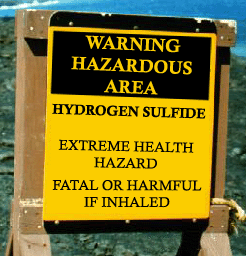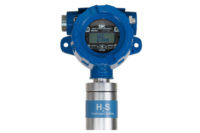 A 46-year-old hockey-playing oilfield worker nearly died last December connecting a hose to a valve at a rural Saskatchewan production operation in February, 2014. His face was sprayed with a mix of gas, water and oil. He inhaled and swallowed it.
A 46-year-old hockey-playing oilfield worker nearly died last December connecting a hose to a valve at a rural Saskatchewan production operation in February, 2014. His face was sprayed with a mix of gas, water and oil. He inhaled and swallowed it.
Medical records show the toxic stew was laced with hydrogen sulfide (H2S), a potentially lethal gas that thousands of oil and gas workers are potentially exposed to every day. Three years later, the worker was still struggling to chew food, swallow, taste, small, speak properly, breathe clearly, and sleep soundly, according to an article in the Toronto Star.
An investigation by the Star, Global News and National Observer obtained documents detailing growing concerns about H2S dating back to 2012 that were never made public. Three months after this incident, a 38-year-old oilfield worker died in a similar incident involving H2S.
“There’s always a risk of (H2S) accumulating. That’s just how it is in the oil patch, said the owner of the small trucking company that employed the still-recovering 46-year-old.
Planning & training
Many workers are at risk for exposure to H2S, according to OSHA, including workers in oil and natural gas drilling and refining. H2S may be present in oil and gas deposits and is a by-product of the desulfurization process of these fuels. The risk is great enough that OSHA has issued an Oil and Gas Well Drilling and Servicing eTool. According to the eTool, active monitoring for H2S gas and good planning and training programs are the best ways to prevent injury, illness and death.
All personnel working in an area where concentrations of H2S exceed OSHA’s permissible exposure limit of 10 parts per million (ppm) should be trained about exposure hazards before beginning work, according to the agency’s eTool. An H2S contingency plan designed by the American Petroleum Institute should be implemented. The plan calls for gas detection where H2S may exist, instruction in the use of H2S safety equipment, and comprehensive training.
Workers in H2S operations should be able to identify the characteristics, sources and hazards of H2S, proper use of H2S detection methods used on site, use and operation of all H2S monitoring systems, symptoms of H2S exposure, proper use of PPE, rescue and first aid procedures in the event of exposure, wind direction awareness and routes of egress, emergency response and shutdown procedures, and the importance of drilling fluid treating plans prior to encountering H2S. Encountering H2S in any confined space is an especially dangerous risk of overexposure.
OSHA has repeated cited employers in the oil and gas industry for exposing workers to H2S; some incidents have involved explosions and fatalities. In 2010, OSHA proposed more than $1.4 million in penalties in connection with a fatal explosion in Houston.
Air monitoring
Before entering areas where H2S may be present, OSHA calls for air to be tested for the presence and concentration of H2S by a qualified person using air monitoring equipment, such as an H2S multi-gas detector. Testing should also determine if fire/explosion precautions are necessary.
If the gas is present, the space or area must be ventilated continually to remove the gas. If the gas cannot be removed, personnel enter the exposure zone must use respiratory protection and other necessary PPE, rescue and communication equipment. OSHA says air monitoring must be conducted prior to and at regular times during any work activity where exposure to H2S is possible. When working in confined spaces air monitoring must be conducted in accordance with OSHA’s confined space standard. OSHA Sampling and Analytical Method 1008 describes the methodology for collecting airborne H2S using appropriate monitors.
Be alert to exposure level symptoms
The odor threshold for H2S (when a rotten egg smell is first detected to some) can occur at 0.01-1.5 ppm. Odor becomes offensive at 3-5 ppm. Above 30 ppm, the odor is described as sweet or sickeningly sweet.
At 2-5 ppm, prolonged exposure to H2S may cause nausea, tearing of the eyes, headaches, or loss of sleep. At 20 ppm, exposure can cause possible fatigue, loss of appetite, headache, irritability, poor memory, and dizziness. At 50-100 ppm, H2S exposure can cause slight conjunctivitis (“gas eye”) and respiratory tract irritation after one hour. At an exposure level of 100 ppm, victims may experience coughing, irritated eyes, loss of smell after 2-15 minutes, altered breathing, drowsiness after 15-30 minutes, throat irritation after one hour, and the gradual increase in severity of symptoms over several hours. Death may occur after 48 hours.
At higher H2S exposure levels the symptoms are obvious. At 500-700 ppm, over-exposed workers are staggering and can collapse within five minutes. Serious damage to the eyes occurs in 30 minutes, and death can occur in 30-60 minutes. At 700-1000 ppm, over-exposed workers experience rapid unconsciousness, “knockdown” or immediate collapse within one or two breaths, breathing then stops and death occurs within minutes. A ‘knockdown” often results in falls that can seriously injure a worker. At the extremely high levels of 1000-2000 ppm, death is nearly instant.
The typical route of exposure for H2S is inhalation. But exposure to liquid H2S can cause “blue skin” or frostbite. If clothing becomes wet, avoid ignition sources, remove the clothing, and isolate it in a safe area to allow it to evaporate.
Don’t rely on sense of smell
Over-exposures are best avoided if workers are trained to know that H2S is a colorless, flammable, extremely hazardous gas with a rotten egg smell. H2S is heavier than air and may travel along the ground. Inhaled H2S is rapidly absorbed by the lungs. As note, workers can small the rotten egg order of H2S at low concentrations in the air. Health experts warn you should not rely on your sense of small to indicate the continuing presence of H2S or to signify hazardous concentrations because you can lose your ability to smell the gas even though it is still present by rapid olfactory fatigue. At high concentrations the ability to smell the gas can be lost instantly.



